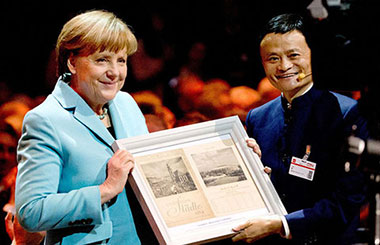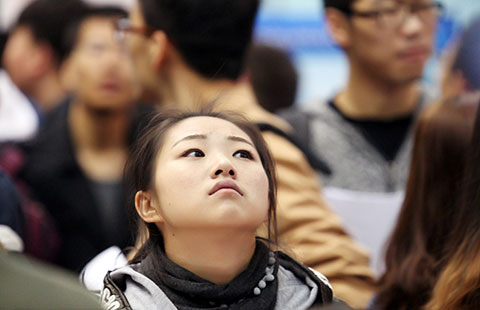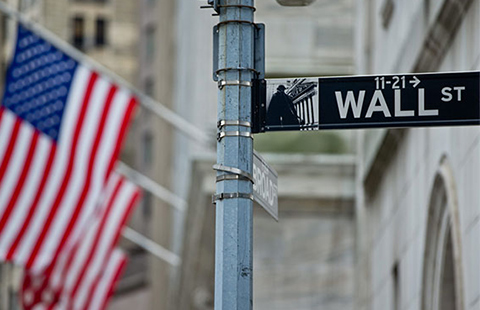Central bank redraws financial map by cutting interest rates and reserve ratio
By Yi Xianrong (chinadaily.com.cn) Updated: 2015-11-12 15:30Deposit rate: Overall rise not seen yet
Among the stimulating efforts, the move with the most far-reaching impact is the lifting of ceiling on deposit rate, which marks completion of China's interest rates liberalization. What's more, the absence of an overall disruptive rise in interest rates, which are usually seen in other nations when such free reign is given, bears testimony to China's reform success.
However, the ceiling removal stands to change the overall dynamics among Chinese financial stake-holders. The time will be gone when Chinese banks, regardless of their business capacity, can sit back and watch their profits grow rapidly as long as expansion is guaranteed. The liberalized interest rates and the fierce market competition are bound to narrow or even close the deposit-loan interest margin.
Bankers won't be able to rise above such challenges without improving their risk-pricing capacity and operation efficiency. Therefore, great changes in market strategies and business practices seem to be inevitable for them. Recent profits slowdown and rising bad loans ratio in China's banking industry are symptomatic of the changing financial climate.
Furthermore, such easy monetary policies will put China a step closer to negative interest rates—an era that has already come since the central bank cut interest rates in late August, when the monthly CPI rose 2 percent, higher than the one-year deposit rate of 1.75 percent in August. In September, CPI climbed by 1.6 percent, also above the one-year deposit rate of 1. 5 percent at that time. Since 1990s, China has witnessed four periods of negative interest rates, and the last bout spanned nearly 22 months, from February 2010 to March 2012.
Negative interest rates can force depositors to divert their money from banks to stock market, real estate, or even high-yielding P2P lending, infusing vitality into these sectors. However, the loss of savings means that banks will have less money to lend—not good news for the loan financing in the real economy, and banks' credit growth will slow.
Stock market: A possible turn for the better
The PBOC's decision has quite some bearing on China's stock market, where buying sentiment faced brunt of the market rout and faith was only restored by bits as benchmark readings pick up recently. From Sept 2 to Oct 23, Shanghai Composite Index rebounded by nearly 8 percent, and margin financing are back on the rise. As daily trading volume is back to one-trillion-yuan level, evidence shows the market has lured investors back. This has been particularly the case since the national day holiday that fell on the first week of October.
The shaved rates and ratio will bring down the financing cost, and likely flood the stock market with new liquidity, fueling its revival. However, it remains for investors to see whether there will be a repeat of the overall stock market boom brought by the PBOC's rate cut on Nov 11 last year.
But one thing for sure is that what the central bank did can come as a shot in the arm for investors. Now in a financial market without lucrative investment choice, the PBOC's initiative will lead to a further fall in the risk-free interest rate, which, in turn, will encourage even more capital flow to the stock market, boding well for its development.
Theoretically and empirically, a low-rate cycle is the greatest impetus for the stock market to turn for the better. The US quantitative easing put in place after the 2008 financial crisis drove interest rates down to zero, which has contributed enormously to a surge in US Dow Jones Index from 6,600 to 18,000. Similarly, the current record low interest rates will send China's stock market in an upward spiral.
In a nutshell, the cuts in interest rates and reserve ratio by the central bank open a low-rate cycle for Chinese financial market. Given the circumstances, if this low-cost capital can pour into the real economy, China will breathe easier with its economy back in an upward trajectory. However, investors should also beware of greater risks within China's financial system if such cash inflow hikes up asset prices, such as those of equities and housing.
This article is written by Yi Xianrong, researcher at the Institute of Finance Research under the Chinese Academy of Social Sciences. The views do not necessarily reflect those of China Daily.
- Courier companies go hi-tech to cope with delivery rush
- Central bank redraws financial map by cutting interest rates and reserve ratio
- Stay alert against over-politicization of global free trade
- Tmall Singles' Day sales rise 60%
- China approves 237 fixed-asset investment projects in Jan-Oct
- Let's not discount human touch next Nov 11, okay?
- Jockeying for supporting education
- Finding the solutions for development, health woes














